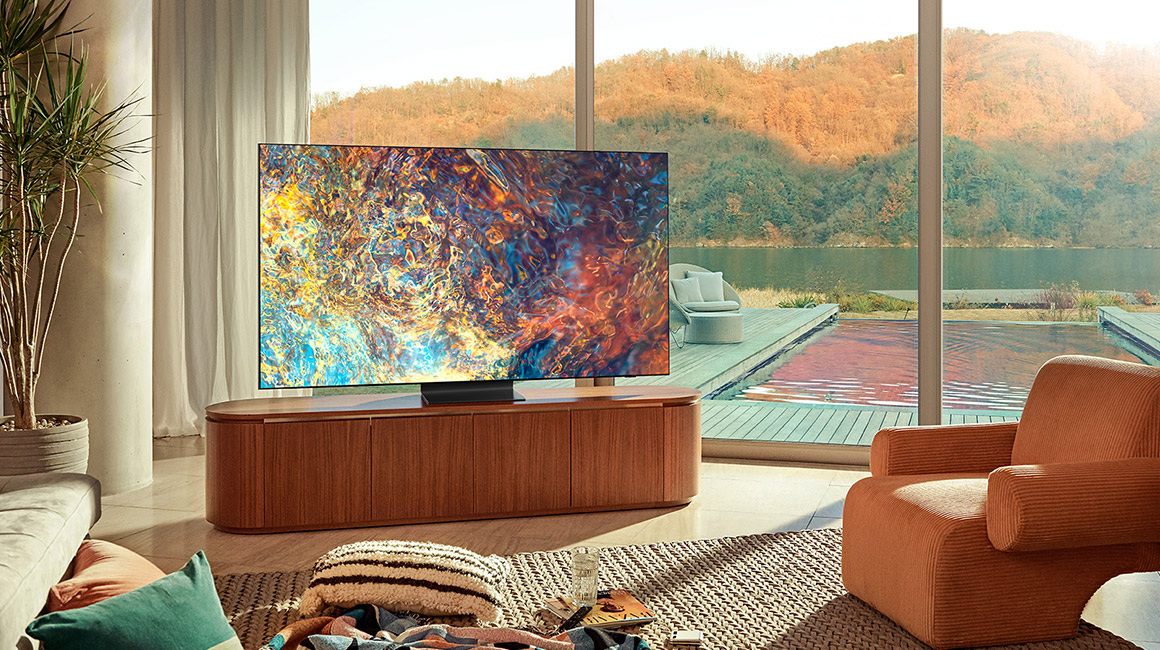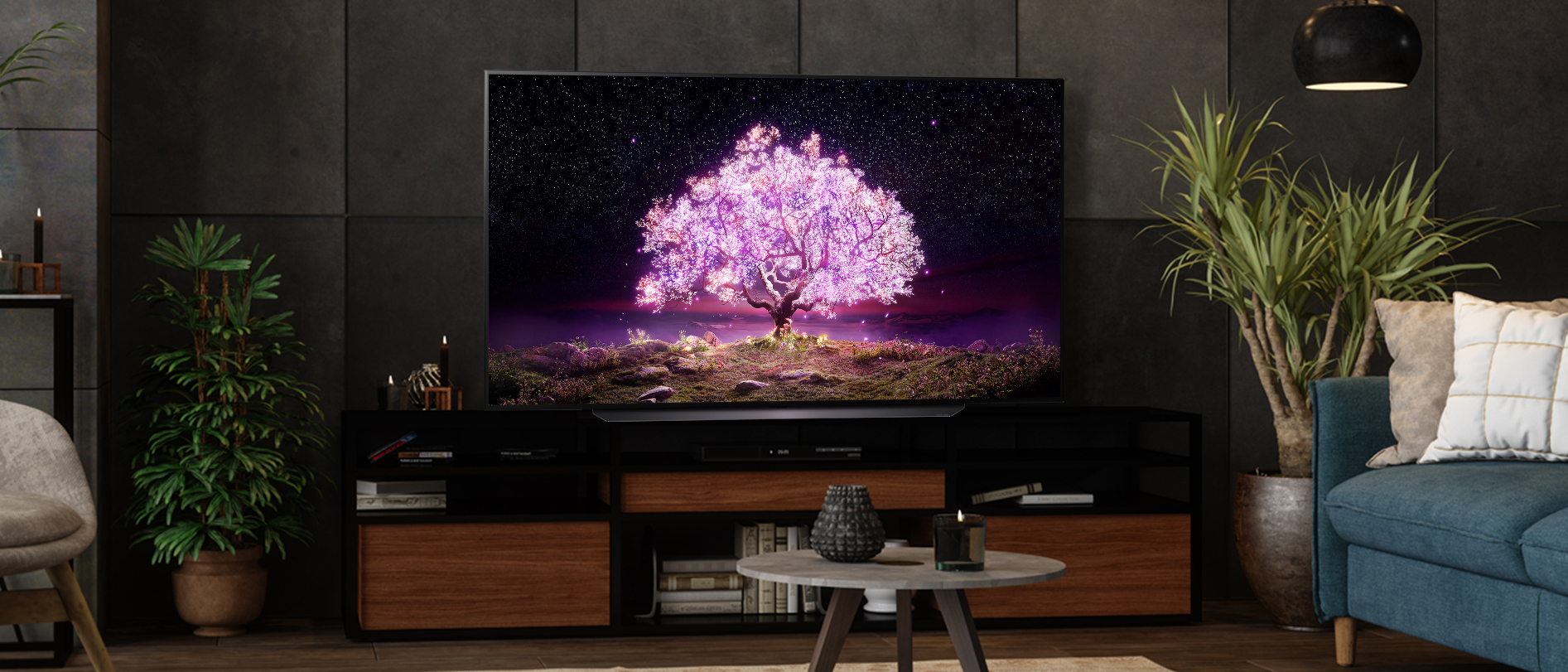LCD TVs are brighter than OLED TVs. At least, the best and brightest LED-backlit LCD sets are brighter than the best and brightest OLED alternatives, and that’s an irrefutable fact.
It’s also part of the reason why OLED TVs have limitations when it comes to displaying HDR or High Dynamic Range content, which requires high brightness levels to really do its expanded color gamut and contrast ratio justice – something needed for the rich hues and dynamic picture quality that HDR can offer.
Of course, the full story of why OLED technology sometimes struggles with HDR content is more complicated than that. But let's kick off by looking at measurable brightness, which is a major part of the problem.
For context, most HDR content is graded to 1,000 nits brightness, and therefore requires a screen capable of 1,000 nits to render the content correctly. Some content is admittedly graded to 4,000 nits, though it’s in the minority for now and in any case implies brightness levels that no consumer-level display tech can achieve.
Indeed, even professional displays used to grade content that are capable of 4,000 nits are almost non-existent.
The need for 1,000 nits
If 1,000 nits is the prevailing standard and basic requirement for screen brightness in an HDR context, let’s take the new LG G1 TV as the standard bearer for OLED tech. Thanks to its evolutionary OLED evo technology, it’s able to muster 20% more brightness – according to LG’s own stats – than previous generation OLED panels. Independent testing puts the G1 at around 870 nits for sustained brightness in the Vivid picture setting, compared to 754 nits in its LG GX predecessor.
TechRadar's own LG G1 review states that, "Our own measurements yield a peak brightness reading on a 10% (of the screen) white HDR window of just over 870 nits. It’s a small but notable improvement over the 754 nits of last year’s GX range – and the peak brightness reduces by 100 nits or so when you shift from the (inadvisable) Vivid picture preset to Standard.
"The extent of the G1 brightness improvement versus the GX, though, tends to be between 10% and 20% across all picture presets, and that’s always enough to make its presence felt in two key ways."

That’s not bad when you consider the CRT TVs of yore typically topped out at just 100 nits of brightness. 750-870 nits is not only pretty punchy, but it’s also not a million miles away from that 1,000 nit standard.
However, these figures are still somewhat underwhelming compared to the brightest LCD TVs, like the Samsung QN90A, which can output around 1,500 nits and offer nearly double the brightness of the LG G1. The Vizio P Series Quantum X is even better, pushing up brightness to a whopping 1,900 nits.
It’s worth noting that 870 nits peak brightness is actually a best case scenario for OLED. Such brightness figures are achieved only across a small portion of the screen, typically just a 10 percent portion of the panel. Across the entire screen, it’s a very different picture.
Admittedly, most LCD TVs also can’t achieve the same peak brightness across the whole screen as they can in a smaller window. But the drop off isn’t as bad. The Samsung QN90A is good for about 700 nits of sustained brightness across the entire screen, for example. The LG G1 in the same whole-screen scenario? Nearer 175 nits. Yes, really, just 175 nits.
Full-screen brightness

Even that 175 nit figure entails the whole screen displaying pure white at max brightness, so it’s not terribly relevant to real-world viewing. But the brighter the overall scene being displayed, the more OLED screen brightness drops off. That’s because OLED TVs run automatic bright limiters, known as ABLs for short. It’s a mitigation technology designed to protect the organic material in an OLED panel, which is sensitive to overheating and also prone to burn-in at high brightness levels.
Outright brightness levels can be an issue for OLED sets, especially when the brighter parts of a given scene take up a significant portion of the image. But there’s also a more subtle limitation at play.
The ability to achieve high peak brightness isn’t just about brightness for brightness sake or for maximum contrast with the darkest parts of the image. Higher brightness also enables the retention of subtle details in brighter scenes.
It all comes down to the way that HDR content is processed for output to take into account the abilities and limitations of human vision. Known as Perceptual Quantisation, or ‘PQ’ for short, this transfer function includes a model of the granularity of human sight or the ability of the human eye to perceive two different levels of light.
To cut a long and technical story short, an overly-bright display can cause posterization, which involves the degradation of what should be smooth colour transitions or gradients into blocks or bands of abrupt colour changes. On the other hand, if the display is too dim, details in bright areas bloom or bleed into one another, resulting in the loss of finer elements as large areas flatten out and become featureless.
The brightness levels at which this occurs for any given content depends on the level at which it has been graded. Again, most content is currently graded to 1,000 nits, so the best LCD sets have sufficient brightness to track the PQ transfer function correctly. OLEDs? Not so much.
A drop in detail

The upshot is that OLED sets can lack detail in brighter scenes compared to the best LED-backlit LCD TVs. Some OLED TVs include an optional tone mapping function that can claw back much or all of the lost detail. However, that comes at the cost of overall brightness and vibrancy, which is obviously suboptimal.
None of this is to say that OLED sets are entirely incapable of HDR rendering. Nor is it to say that OLED technology is necessarily inferior to LCD – it’s not. OLED has huge advantages when it comes to features like per-pixel lighting, viewing angles, response time and more.
Overall, OLED technology is often clearly superior to even the best LED-backlit LCDs by many or even most metrics of performance. But when it comes to HDR rendering and particularly when high brightness levels are called for, OLED has certain shortcomings that need to be kept in mind when you’re shopping around for a truly HDR-capable television.
- Check out the best OLED TVs
from TechRadar - All the latest technology news https://ift.tt/2SeFG2I
